 Topic 5: Evolution and biodiversity
Topic 5: Evolution and biodiversity
This is an introduction to the evolution and biodiversity topic. It lists understandings and skills expected for Topic 5 including the evidence for evolution, natural selection, classification and cladistics. Helpful for revision.
Detailed revision notes, activities and questions can be found for each of the sub-topic pages:
- 5.1 Evidence for evolution
- 5.2 Natural selection
- 5.3 Classification of biodiversity
- 5.4 Cladistics
5.1 Evidence for evolution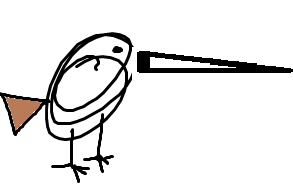
- A change in the heritable characteristics of a species is evolution.
- Evidence for evolution comes from
- the fossil record.
- Selective breeding of domesticated animals
- "Adaptive radiation" can explain similar structures with different functions.
- Isolated populations can produce separate species by divergent evolution.
- Continuous variation across the geographical range of related populations matches the concept of gradual divergence.
Skills (can you ....)
- Describe how the dark bark leads to the development of melanistic insects in polluted areas.
- Compare and contrast the pentadactyl limb of mammals, birds, amphibians and reptiles.
- Describe how each limb structure is adapted to each different method of locomotion.
 5.2 Natural selection
5.2 Natural selection
- Natural selection requires;
- variation in adaptations within a species.
- overproduction of offspring
- best adapted individuals have better survival rates
- so they reproduce more and pass on successful adaptations to offspring.
- Variation within a species can be caused by Mutation, meiosis and sexual reproduction.
- Adaptations are advantageous characteristics of an individual for it's way of life.
- More offspring are produced by the best adapted individuals while less well adapted individuals die or produce fewer offspring.
- Adaptations / characteristics are passed on to offspring (inheritance).
- Natural selection increases the frequency of the better adaptations and decreases the frequency of other characteristics. This leads to changes in characteristics within the species
Skills (can you ....)
- Analyse data about the changes in beak lengths of finches on Daphne Major.
- Understood how the evolution of antibiotic resistance in bacteria occurs by natural selection.
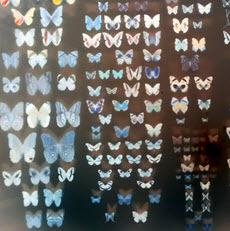 5.3 Classification of biodiversity
5.3 Classification of biodiversity
- The binomial system of scientific names is used across the world. It was agreed by biologists at a series of congresses,
- When a species is discovered it is given a scientific (binomial) name.
- Taxonomists classify species using a hierarchy of taxa.
- All organisms are classified into three domains; Archaea (called archaeans), eubacteria (bacteria) and eukaryote (eukayotes). (Viruses are not classified as living)
- Eukaryotes are classified into the main taxa: kingdom, phylum, class, order, family, genus and species.
- In a natural classification, the genus and accompanying higher taxa consist of all the species that have evolved from one common ancestral species.
- This natural classification helps identification of species and the prediction of shared characteristics by related species.
- Taxonomists sometimes reclassify groups of species when new evidence about evolution appears.
Skills (can you ....)
-
Classify one plant and one animal species from domain to species level.
-
Remember and recognise the main features of:
-
bryophyta, filicinophyta, coniferophyta and angiospermophyta.(including vascular tissue
-
porifera, cnidaria, platylhelmintha, annelida, mollusca, arthropoda and chordata.
-
birds, mammals, amphibians, reptiles and fish.
-
-
-
Construct a dichotomous key for use in identifying specimens.
5.4 Cladistics
- A clade is a group of organisms that have evolved from a common ancestor.
- Evidence for species of a clade can be
- the base sequences of a gene or
- the amino acid sequence of a protein.
- There is a gradual accumulation of differences and a positive correlation between the number of differences between two species and the time since they diverged from a common ancestor.
- Cladograms are tree diagrams that show the most probable sequence of divergence in clades.
- Evidence from cladistics has shown that classifications of some groups based on structure did not correspond with the evolutionary origins of a group or species.
- Traits can be analogous (due to convergent evolution) or homologous (inherited from a common ancestor).
Skills (can you ....)
-
Interpret and deduce relationships from cladograms including humans and other primates.
-
Appreciate that in the light of new evidence some cladograms are changed.
-
For example the reclassification of the figwort family using evidence from cladistics.
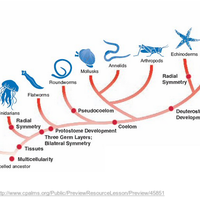
Cladistics 5.4
Cladistics is the study of the family relationships between different classification groups. A clade is a group containing all the descendants of an ancestor species. Understanding the evidence used to build cladograms is also required.
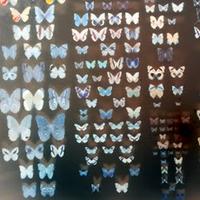
Classification of biodiversity 5.3
Classification helps biologists wherever they are to group organisms into species sharing similar characteristics and share their ideas with others. A basic understanding of the main grouping and their basic features is covered in this topic.
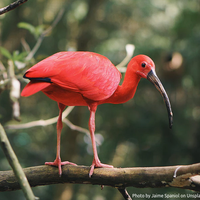
Evidence for evolution 5.1
There are different types of evidence which support the theory of evolution, from fossils to selective breeding. This topic covers a range of evidence and some of the concepts related to inheritance, natural selection and evolution.

Natural selection 5.2
Natural selection increases the frequency of successful adaptations in a species and it relies on variation in the features as well as overproduction of offspring, a struggle for survival and survival of the fittest.


 Twitter
Twitter  Facebook
Facebook  LinkedIn
LinkedIn